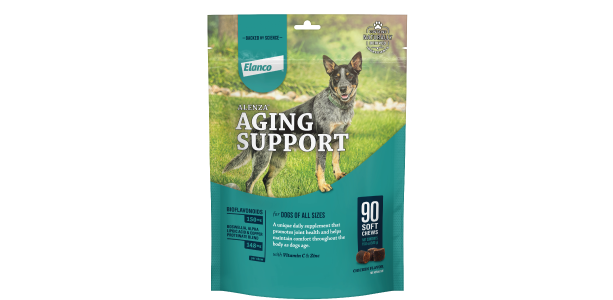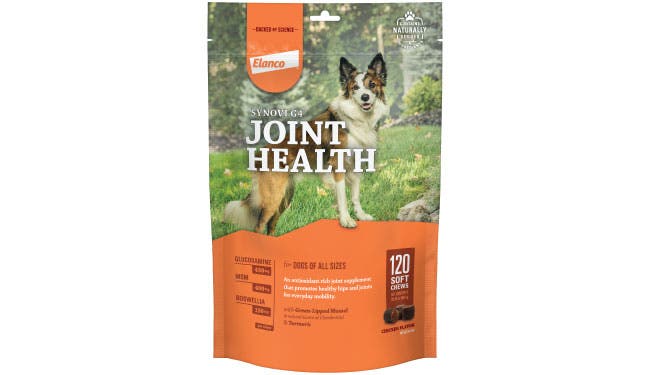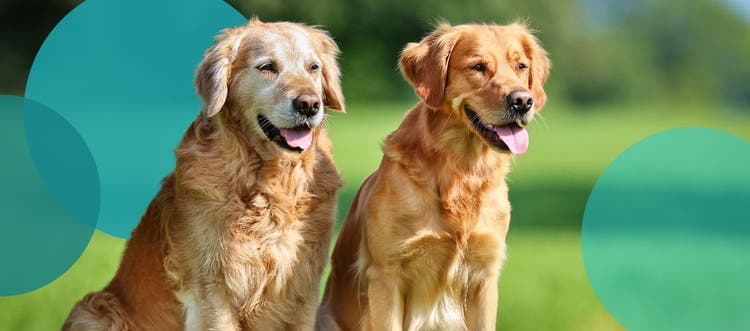Recognize signs of pain in your dog.
When dogs are young and healthy, they roll around, leap and play hard, full of seemingly endless energy. As dogs mature, however, they can become calmer and more reserved. But how do you know if your pet is feeling age-related distress or discomfort?
When you notice your dog is not moving as quickly as in the past, has aches or seems uncomfortable, it can be worrisome. It’s difficult to know exactly how, where and why they’re hurting. As a pet guardian, you can learn to recognize signs of pain in your dog and when to seek appropriate veterinary care.
How Can You Tell If Your Aging Dog Is in Pain?
Signs of discomfort in your senior dog can range from subtle to more noticeable. As your dog ages, keep an eye out for signs that your dog isn’t feeling their best.
Changes in Routine and Behavior
Early, subtle signs of discomfort often begin with changes in routine and/or behavior patterns. Ask yourself these questions and let your veterinarian know if you’re noticing any of the following signs:
- Is your dog hesitant to jump into the car or onto/off of the bed or couch?
- Is your dog hesitant or slower going up or down stairs?
- Does your dog prefer carpeted rooms or walk more slowly/carefully on slippery floors?
- Does your dog get up more slowly, with more effort, after a long nap?
- Did your dog previously follow you everywhere, but now seems to shadow you less?
- Does your dog seem worried, reluctant to respond or disobedient?
- Is your dog reacting negatively or flinching/pulling away when being picked up, touched or petted?
Other Signs of Discomfort
- Changes in eating or drinking
- Changes in sitting or sleeping patterns/positions
- Changes in your dog’s gait (at a walk, trot or run)
- Ears back, a slower tail wag and possibly a hunched appearance
- Panting without exercise, exertion or warm weather
- Restlessness, pacing or inability to settle
- More sitting or lying around
- Less interaction or less socializing with the family
- Excessive grooming and licking paws, elbows or other joint areas
- Longer nails (requiring more trimming)
- Elbow callouses getting larger or thicker
Be aware that dogs do not always stop eating or vocalize when they have discomfort.
What Signs of Pain Should You Discuss with Your Veterinarian?
Dogs can endure discomfort quietly, but if you are an astute pet parent, you may spot some of these signs. Trust your instincts; you’ll know when your dog isn’t comfortable. Discuss your observations and concerns with your veterinarian. And remember that when dogs are at the veterinary office, they can become excitable and may not show the same signs as they do at home.
How to Help Maintain Your Dog’s Comfort
You can do a lot to help make your canine companion comfortable! Your veterinarian will outline a plan that may include weight loss, regular exercise, pain medication or supplements to manage discomfort.
Your veterinarian may recommend supplements containing certain ingredients:
- Glucosamine, chondroitin sulfate and green-lipped mussel provide building blocks to support healthy synovial fluid, cartilage and connective tissues in joints.
- Omega-3 fatty acids in fish oil supplements promote joint health and may help relieve inflammation associated with everyday activity and exercise.
- Plant extracts that contain bioflavonoids such as turmeric, Boswellia, catechin and baicalin may prevent inflammation and help reduce oxidative damage from exercise, training, competition and normal aging.
These types of supplements may support normal healthy muscle, joint, connective and nervous tissue structures and functions that promote your dog’s overall joint health, mobility and whole-body comfort.

Alenza® Aging Support
A unique daily supplement that promotes joint health and helps maintain comfort throughout the body as dogs age.

Synovi G4® Joint Health
An antioxidant-rich joint supplement for dogs that promotes healthy hips and joints.





